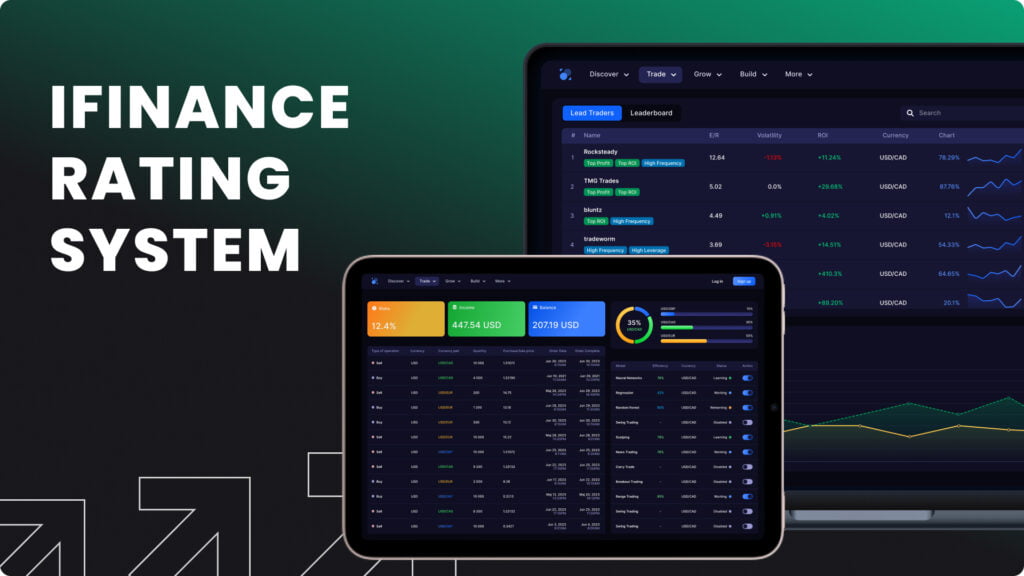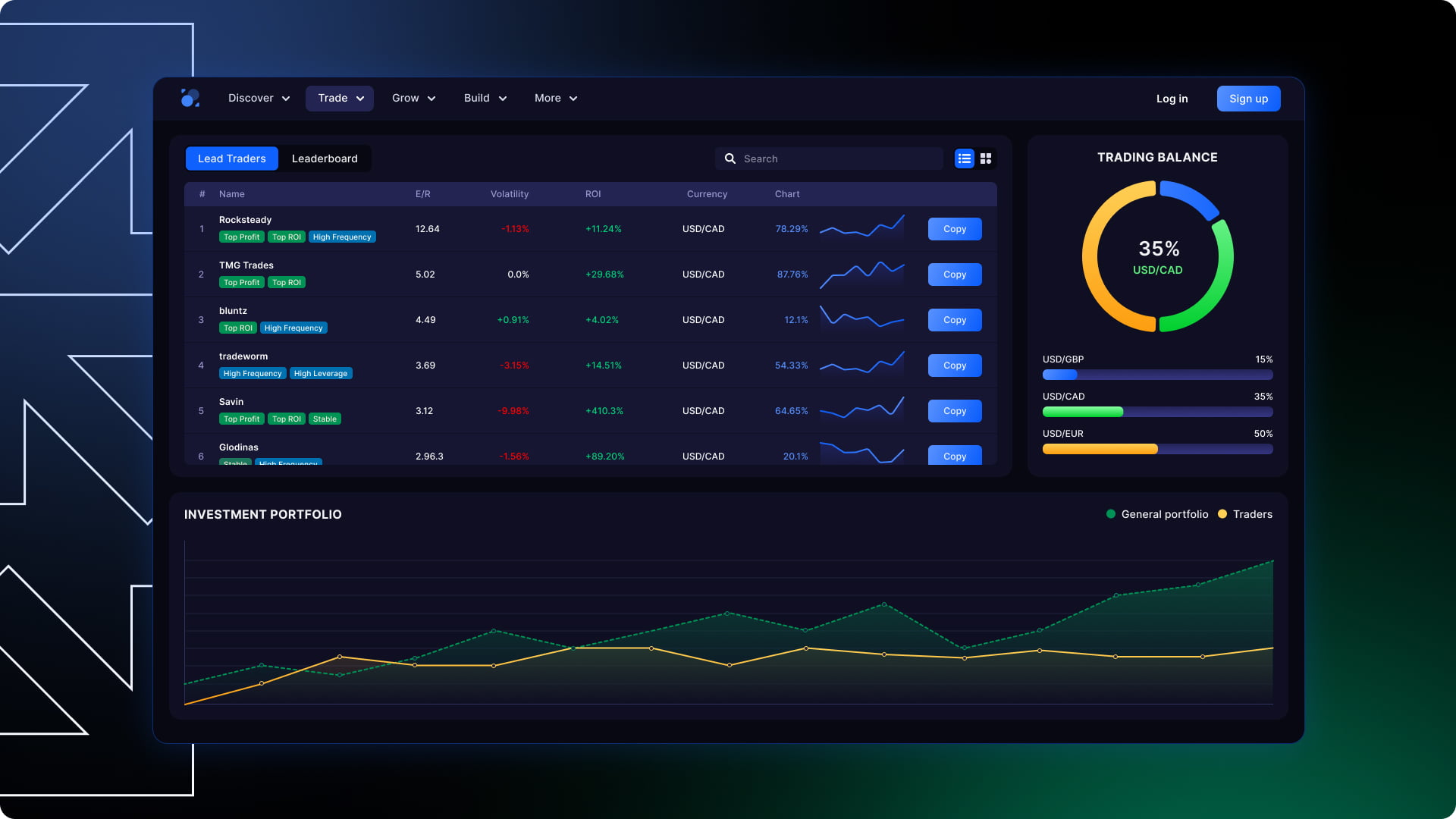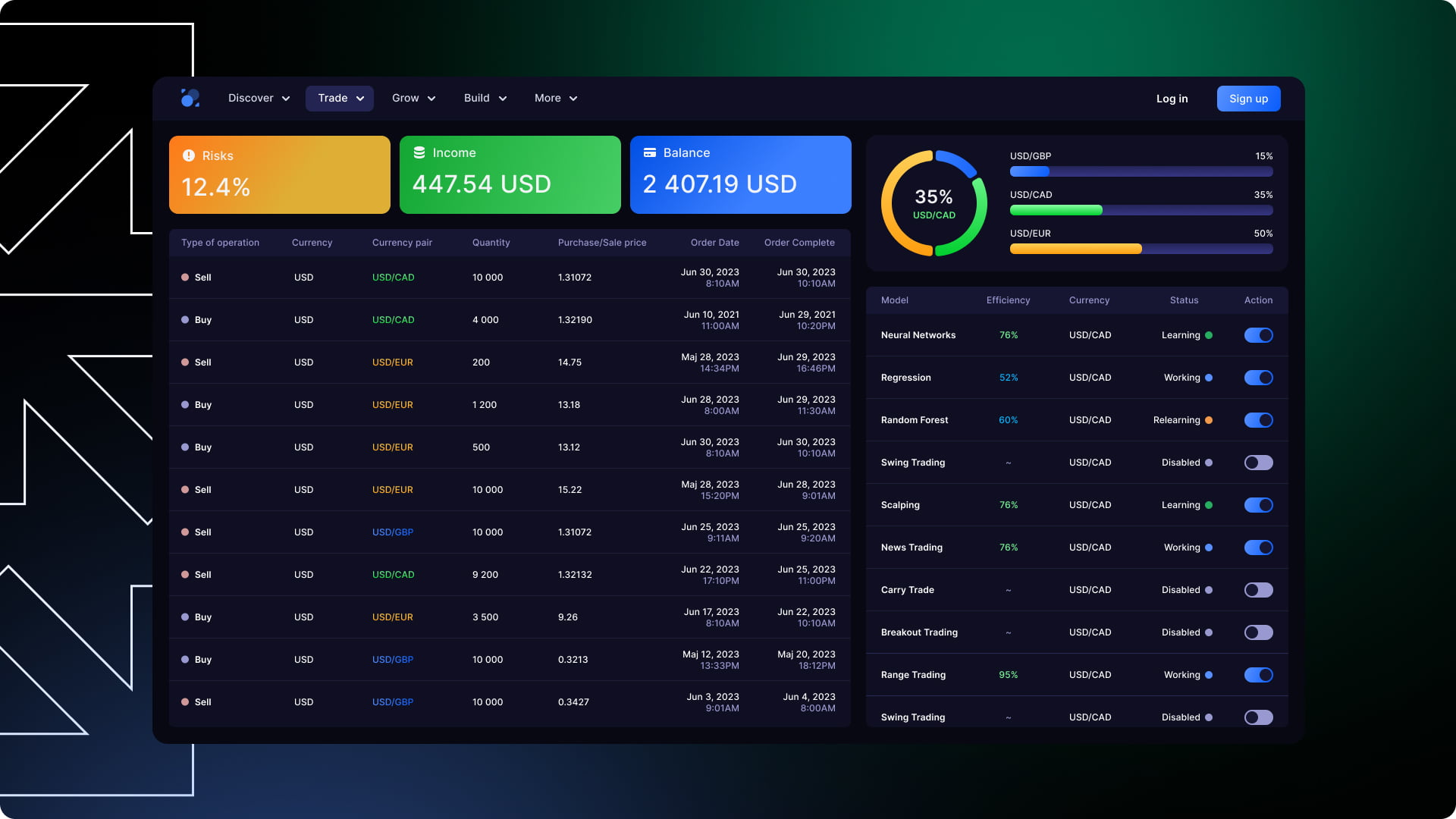
The Finance Rating is an online system for evaluating and ranking portfolios, providing a seamless and efficient platform for alternative financial investments..
Industry: Economic systems, investment sector
Team composition: 1 product manager, 1 designer, 1 dev lead, 2 developers, and 1 quality assurance engineers, 1 deep learning engineer, 2 data scientists
Time spent: 2 year
Technologies: .NET, OWIN self-host, WPF, WEB API 2.0, MS SQL, Redis, Rabbit MQ, ADO.NET, MathCore (Neural Networks, Regression Regression analysis) , Angular 2, Angular 4, CrouiseControl, Multilayer Perceptrons (MLP), Convolutional Neural Networks (CNN), Recurrent Neural Networks (RNN), LSTM and GRU, Transformer models, ARIMA and GARCH models, Vector Autoregressive Models (VAR), Machine Learning models such as Random Forest and Gradient Boosting
1. What is the best investment strategy? How to get from the idea to 45 000 unique users?
Trading and investing in financial instruments can yield significant profits. However, it is crucial to choose the right strategy to avoid potential financial failure. The investment sector offers a wide range of strategies, tactics, and risk management approaches.
In order to address this challenge, you have decided to develop a digital investment platform that leverages the activities of top traders. This platform utilizes mathematical analysis, regression analysis, statistics, and neural networks to manage investment and trading risks. The goal is to provide users with valuable analytical information and generated portfolios. Users can create their own portfolio based on analytical data of trading pairs, follow someone else’s portfolio, or combine the two options. This is an extremely promising objective, isn’t it?
Since your company already had a core analytical department but needed additional mathematicians and a reliable software consultancy partner, the management made the decision to approach Glexen.
Your success is our success. Our success is your success.
– Glexen Solutions
2. Financial software products require meticulous planning, control, and execution since you are responsible for managing clients' money.
Our client had employees with exceptional mathematical and statistical expertise, but that alone was not sufficient for the planned scope of work. After multiple discussions with Glexen experts, it was decided to designate the client’s employees as domain experts, with the leading expert taking on the role of the product owner. Additionally, the analytical team was expanded by bringing in consultants from Glexen to handle the planned scope effectively. In terms of software development, the client made the decision to focus solely on the analytical part and delegate the entire software development scope to Glexen.
One of the primary general non-functional requirements was that product development necessitated strict planning, control, and monitoring. To address this, it was determined that waterfall would be utilized as the project management methodology.
Optimal technologies and development processes tailored for each client. – Glexen Solutions
Another crucial non-functional requirement was to maintain complete control and ownership over all software infrastructure, thereby ruling out the adoption of any cloud SaaS, PaaS, or IaaS solutions, as well as any cloud providers. This requirement had a significant impact on the overall architecture. In addition to the actual software development, Glexen experts had to devise solutions for server monitoring, support, and software deployment processes. Taking into account the requirements for high availability, reliability, durability, and fault tolerance, the following architectural diagram was created and proposed.
3. Whirlpool methodology? Sounds exotic! How was that?
Choosing Whirlpool as the project management methodology had a significant impact on the development process. The process began with a discovery phase guided by the client’s experts’ vision. The preparation for each iteration was divided into four main threads:
- The client’s mathematical experts defined the scope of the next iteration and provided their vision for the expected analytical outcomes and how they should be achieved.
- Glexen’s AI engineers and data scientists took on the heavy and routine workload of building and preparing data for training machine learning models.
- The vision from above was analyzed and formalized into a Business Requirements Specification (BRS) by the Product Manager. With the assistance of UI/UX designers, it was transformed into an easy-to-use and understandable user interface.
- Based on the BRS and UI/UX mockups, the software team planned, designed, and estimated the requirements specification (SRS), complementing the document with architectural diagrams.
Once the BRS, SRS, and architectural diagrams were ready, they were sent to the responsible stakeholders for approval. If any changes were requested, the documents were updated, reviewed, and the process continued until they were approved. Below you can see an example of one of the UI images showcasing the developed pages.
After the BRS and SRS were approved, a backlog for each iteration was prepared, and the implementation phase began. During the iteration, the software development team and the analytical team worked on constructing and implementing their tasks based on the iteration plan. All outcomes were thoroughly tested and verified throughout the iteration.
At the end of each iteration, the results were presented to the stakeholders, and based on their feedback, new changes were requested. This feedback-driven process allowed for continuous improvement, building upon the results of the previous iteration, and starting the process anew.
4. Has the investment lived up to expectations?
Choosing Whirlpool as the main project management methodology, despite the wide popularity of agile methodologies, turned out to be the right decision. The detailed and structured approach to prior planning, analysis, and design resulted in the creation of a highly predictable and stable platform. This, in turn, led to a rapid gain of users’ trust. The incorporation of thorough mathematical analysis and machine learning models proved to be highly accurate in analyzing data and predicting ROI metrics, resulting in success for the client.
5. Impressive: 45,000 unique registrations!
The platform demonstrated stability and predictability, thanks to its highly accurate forecasting capabilities and superior recommendation system. As a result, it quickly gained the trust of the target audience, leading to the establishment of a loyal user base. This user base not only continued to use the platform but also started recommending it to others. The combination of word-of-mouth referrals and strategic marketing campaigns resulted in a significant increase in the user base, reaching a peak of 45,000 unique users.
The best investment you can make is an investment in yourself – get in touch now!




